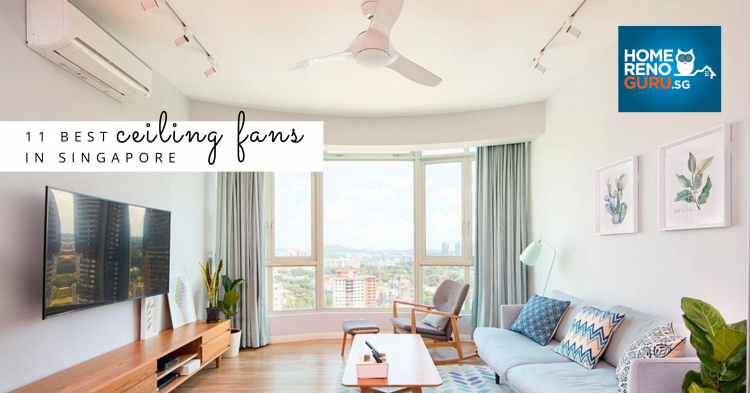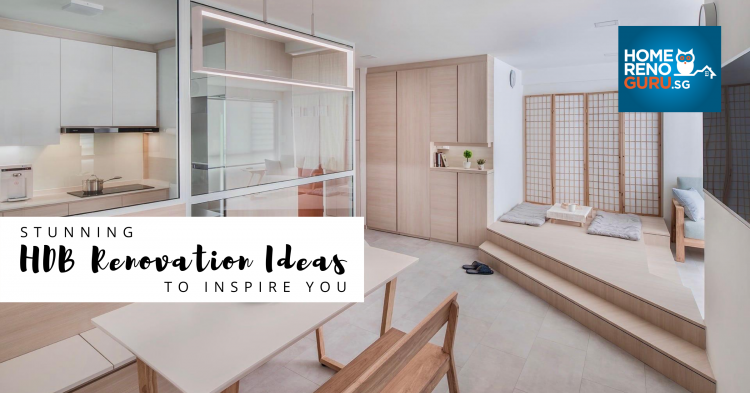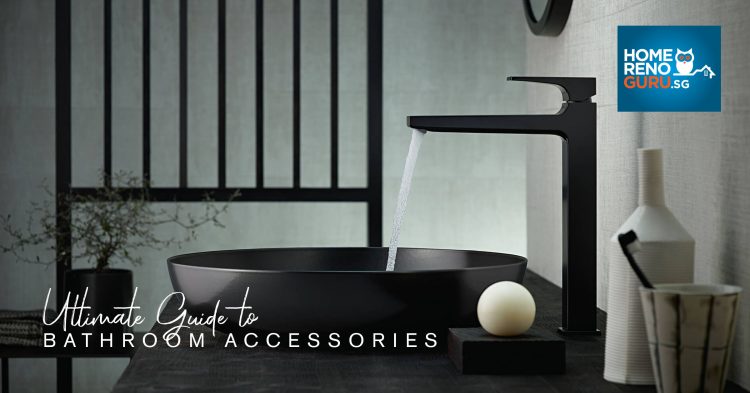A home yoga studio is more than just a room. It’s a sanctuary that instills a sense of peace — a tranquil place you retreat to for a rejuvenating yoga practice or calming meditation session. From the lighting, to the flooring, furnishing and decor, here’s how to turn your home yoga room into a zen inducing space:
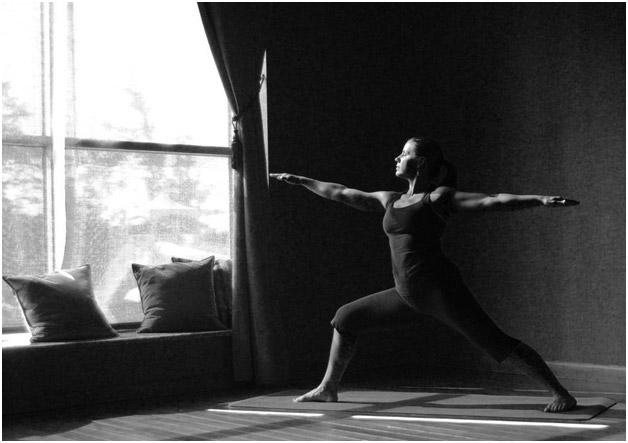
Source: Flickr
1. Lighting: Pick one that’s right for you
Lighting is paramount in setting the mood in your yoga room. The “right” lighting differs across individuals – some like a room that’s well-lit by natural lighting, while others prefer the precise control that dimming lights offer.
Whichever camp you belong to, a few general rules apply: opt for warm lighting, and avoid harsh lighting that’s glaring on the eyes. Allow sunlight to cascade into the room with wide windows or a skylight. Install sheer curtains over the windows if the sunlight is too bright or hot.
Dimming lights are a good bet if you enjoy practising yoga during the evening or in the night. Opt for lights that emit a soft yellow hue to create a cosy and welcoming ambience. You’ll be able to adjust the brightness to suit your mood or practice — brighten up the room if you’re performing an energetic Vinyasa flow, or dim the lights when you settle down into shavasana at the end of your practice.
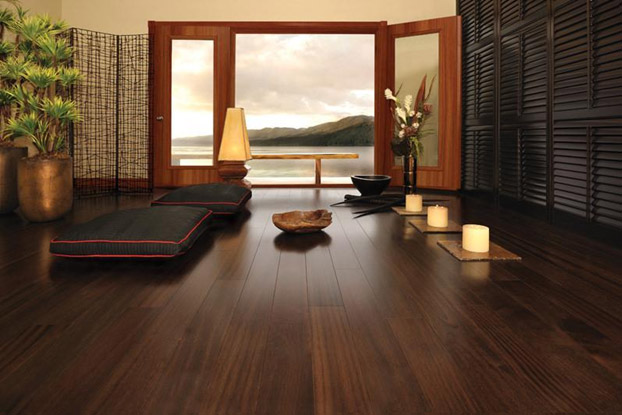
Source: Flickr
2. Flooring: Hardwood is the way to go
Hardwood flooring is a great bet for several reasons: it’s not too hard so it won’t hurt your knees, but is stable enough for holding balancing poses. Carpeted floors may be too soft, but that can be remedied by placing a wooden board or sturdy gym mat atop the carpeted flooring.
It’s best to stay clear of concrete flooring — it’s too hard on the knees, and may be too cold for an early morning or nighttime practice. But if your home is outfitted with concrete floors and you aren’t keen on making a change, turn those floors into yoga-friendly ones by using two or three yoga mats, or placing a flat rug underneath your yoga mat.
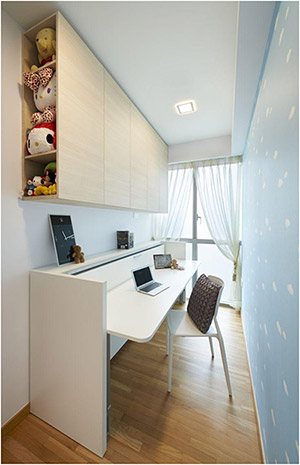
The Minton Condominium by U-Home Interior Design Pte Ltd
3. Save space with retractable furniture
Tight on space? That doesn’t mean you need to give up having a personal yoga room in your home. With retractable and space saving furniture, you’ll be able to transform your functional study into a zen yoga room in a matter of minutes.
Make good use of bare corners in your study room by installing a concealed work station. A fold-down, wall mounted desk provides a snug corner for catching up on work tasks, and can be folded back into the wall when you need additional space.
Having a built-in shelf helps keep your work station well organised. Or consider having your work desk built into a cupboard. When it’s time to roll out your mat, simply shut the doors, and you’ve got an uncluttered room perfect for practice.
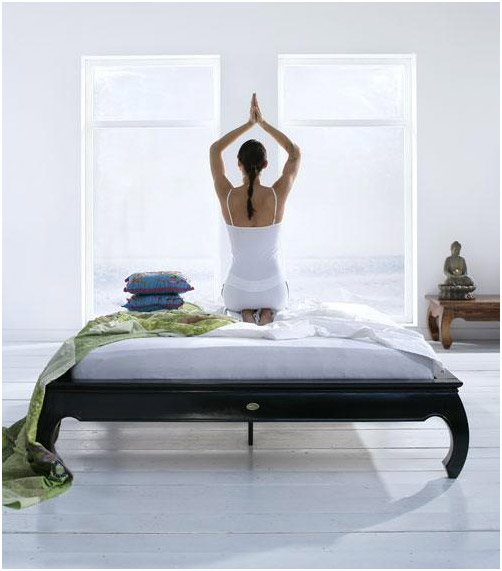
4. K.I.S.S: Keep it simple and soothing
Focus and concentration is key when it comes to yoga and meditation — so you’ll want to create a room that induces a sense of zen. That means avoiding striking colours, elaborate wallpaper, large homeware pieces, multiple storage boxes or unnecessary ornaments, as these can affect your concentration.
Go for a neutral colour palette to create a calm and serene atmosphere. Light blues and greens, as well as white and cream hues are good choices for a yoga room. Keeping your walls bare not only helps in creating a minimalist look — you can also use it as a prop when you’re practising poses that require support, like a headstand or shoulderstand.
Ornaments should be chosen with care. Keep the decor simple with a choice selection of candles, meditation cushions, candles or images that help you get into a relaxed state of mind.
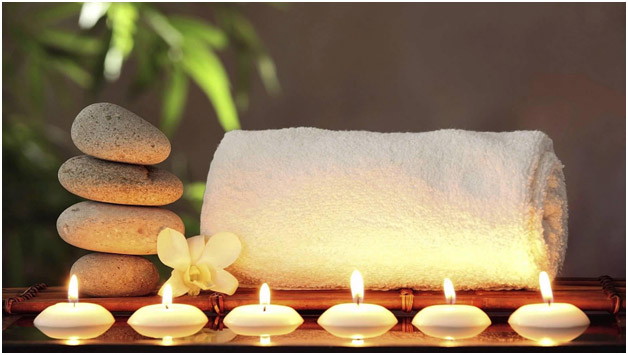
5. Create a sensory experience
Sounds, scents and natural elements play a significant part in setting the mood right. Aromatherapy can work wonders on our minds and emotions, so consider adding an aromatherapy diffuser, incense sticks or candles to your room. Lavender, chamomile and sandalwood are good choices for days where you need a little help in releasing tension from your mind and body.
Combine a soothing scent with meditative or kirtan music played from a surround system for a yoga studio-worthy experience, or add touches of nature into your room by bringing in indoor plants or installing a small water feature.



